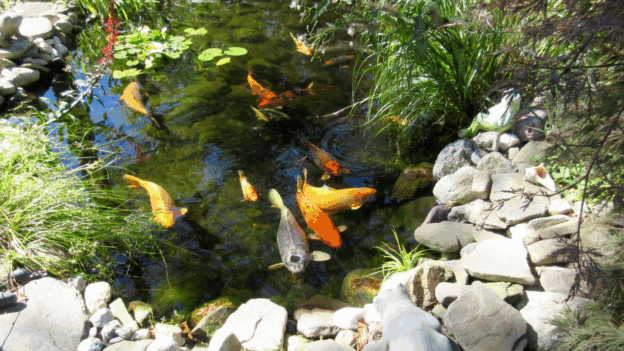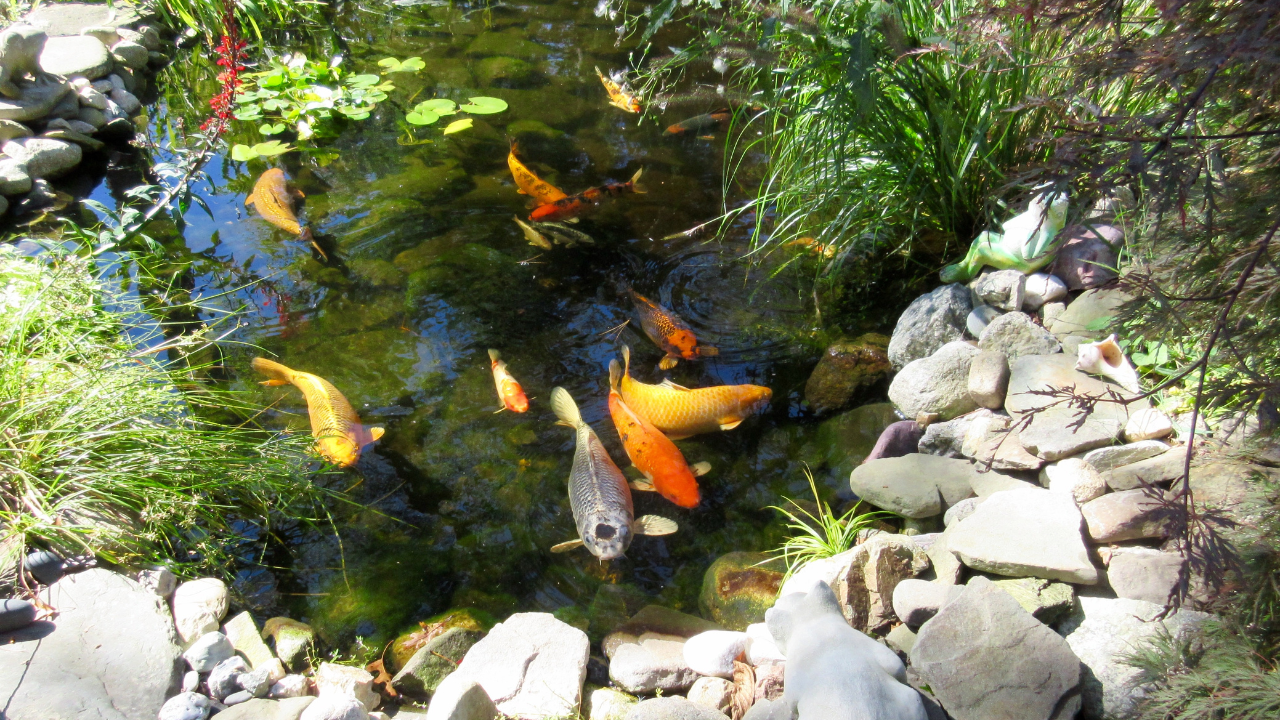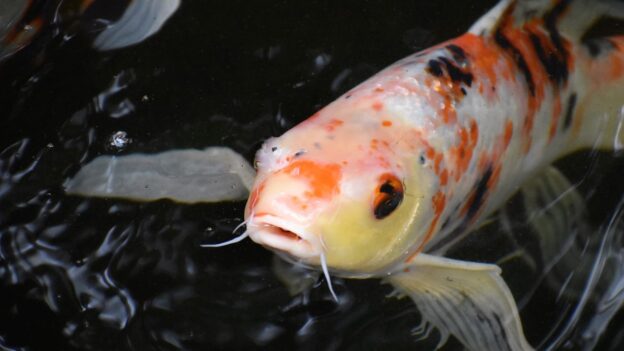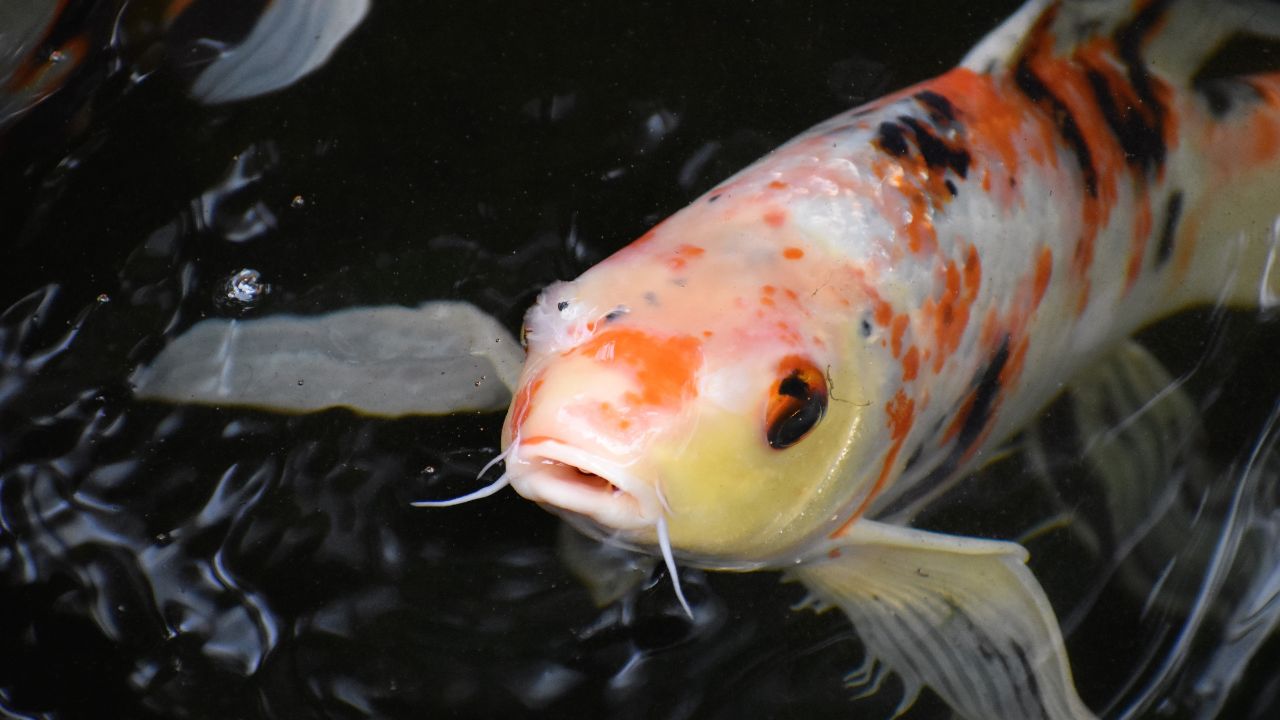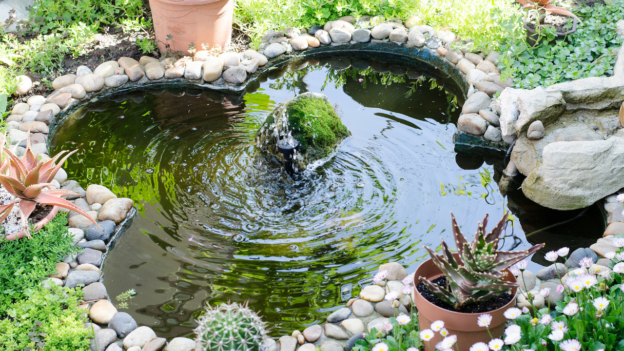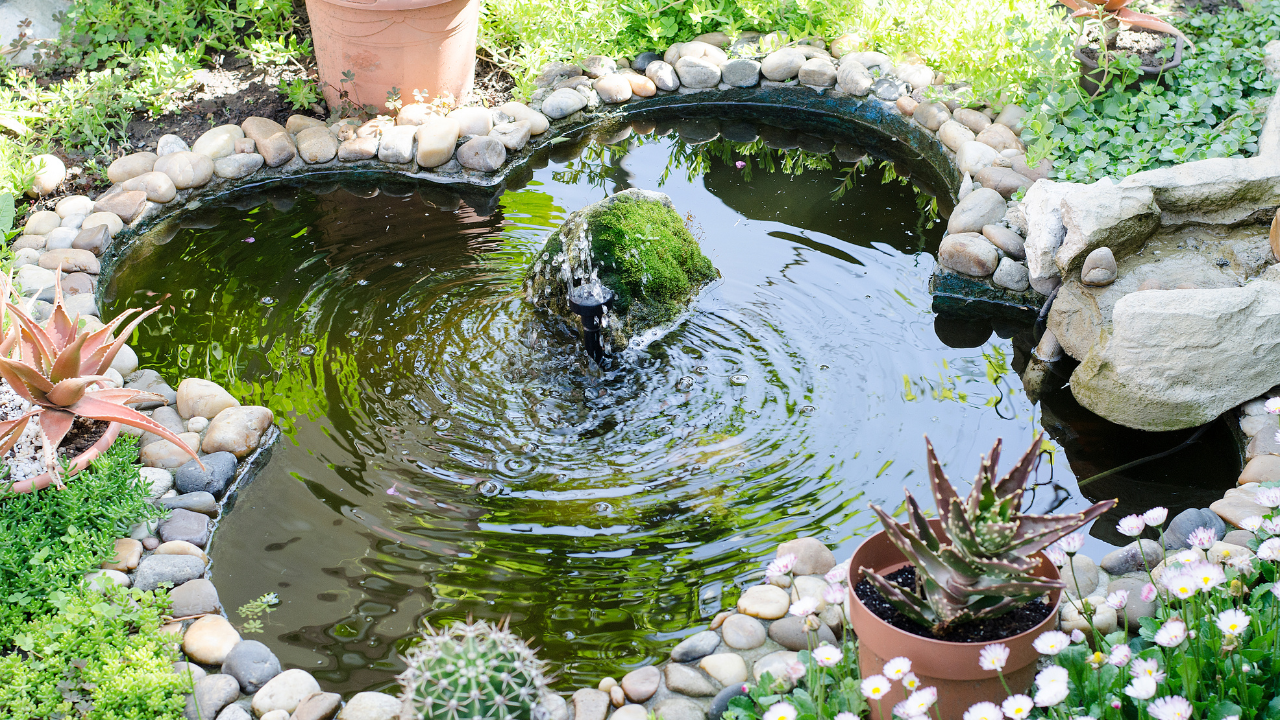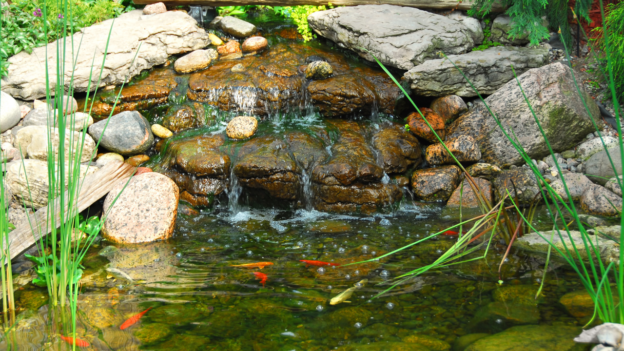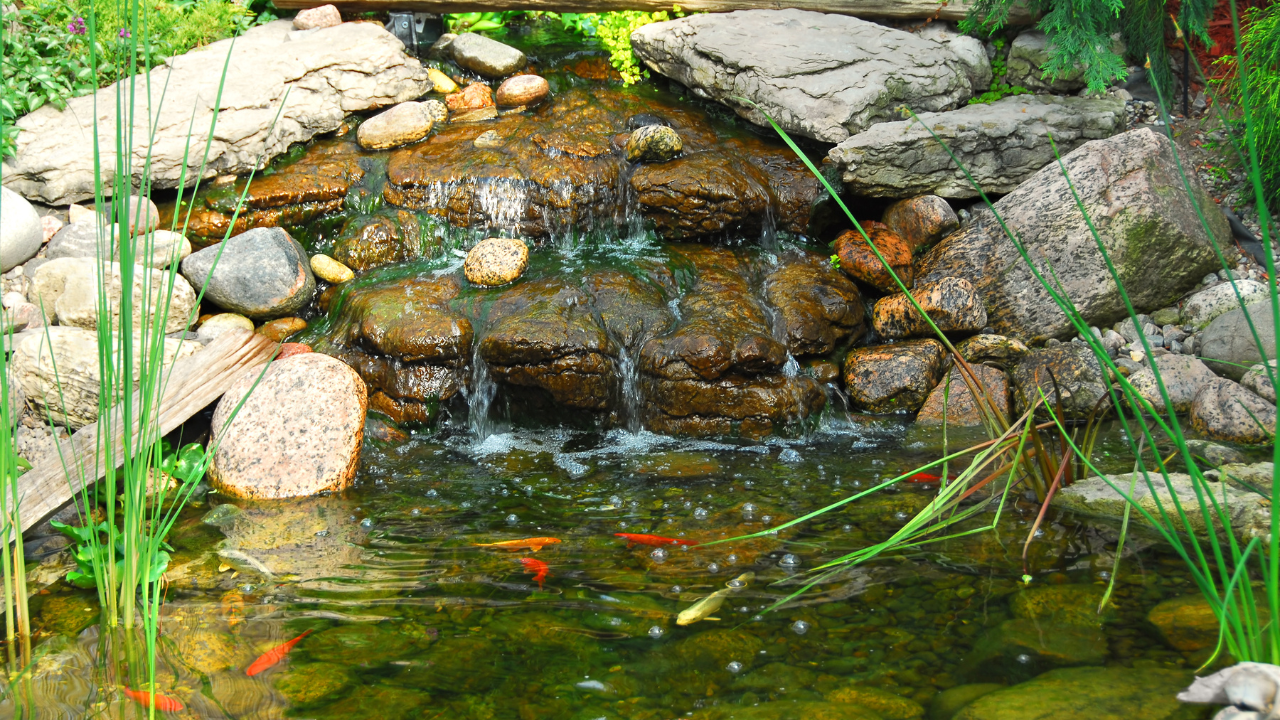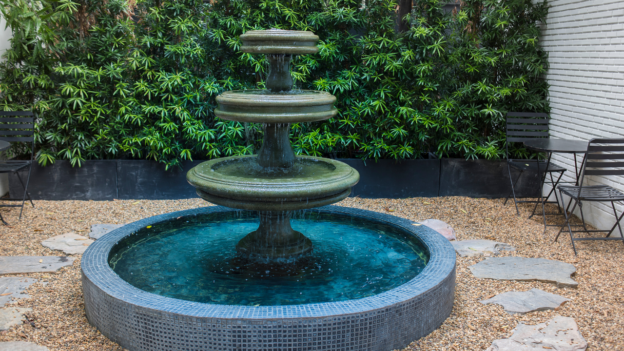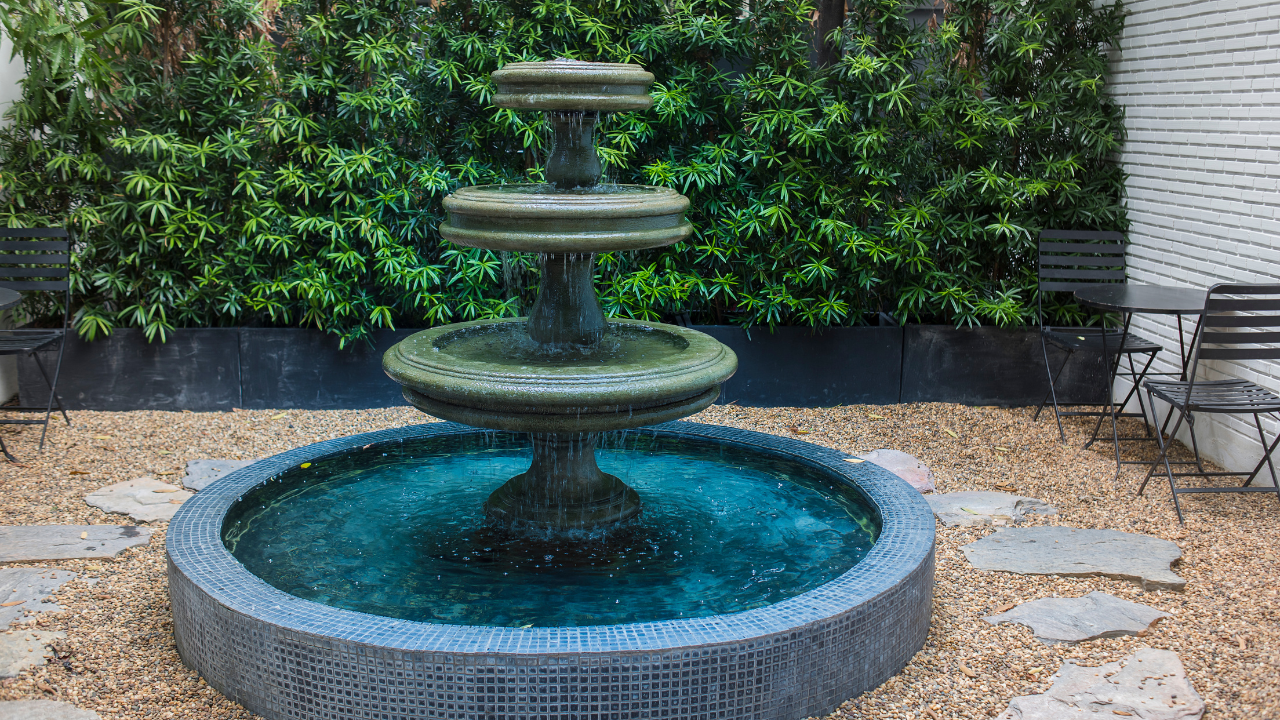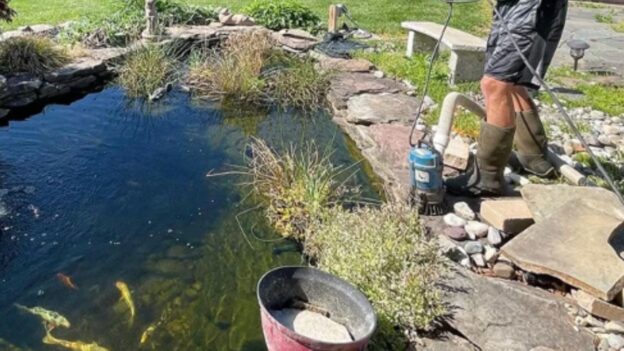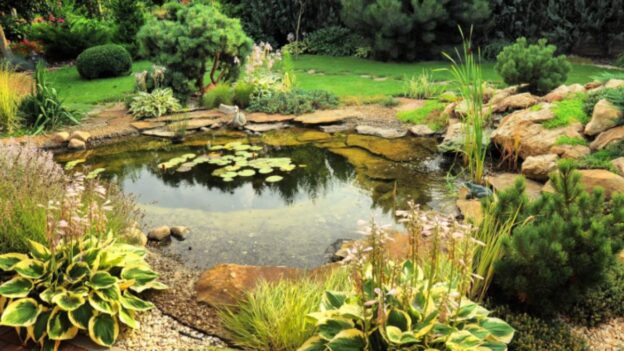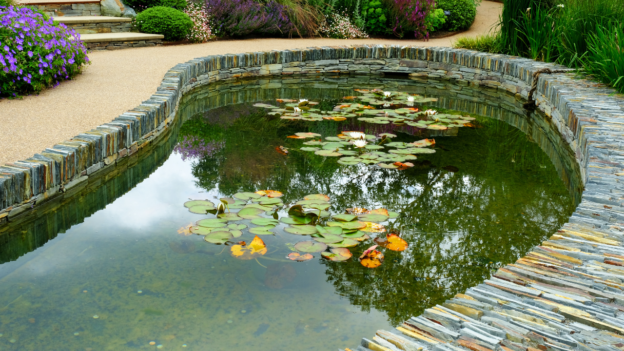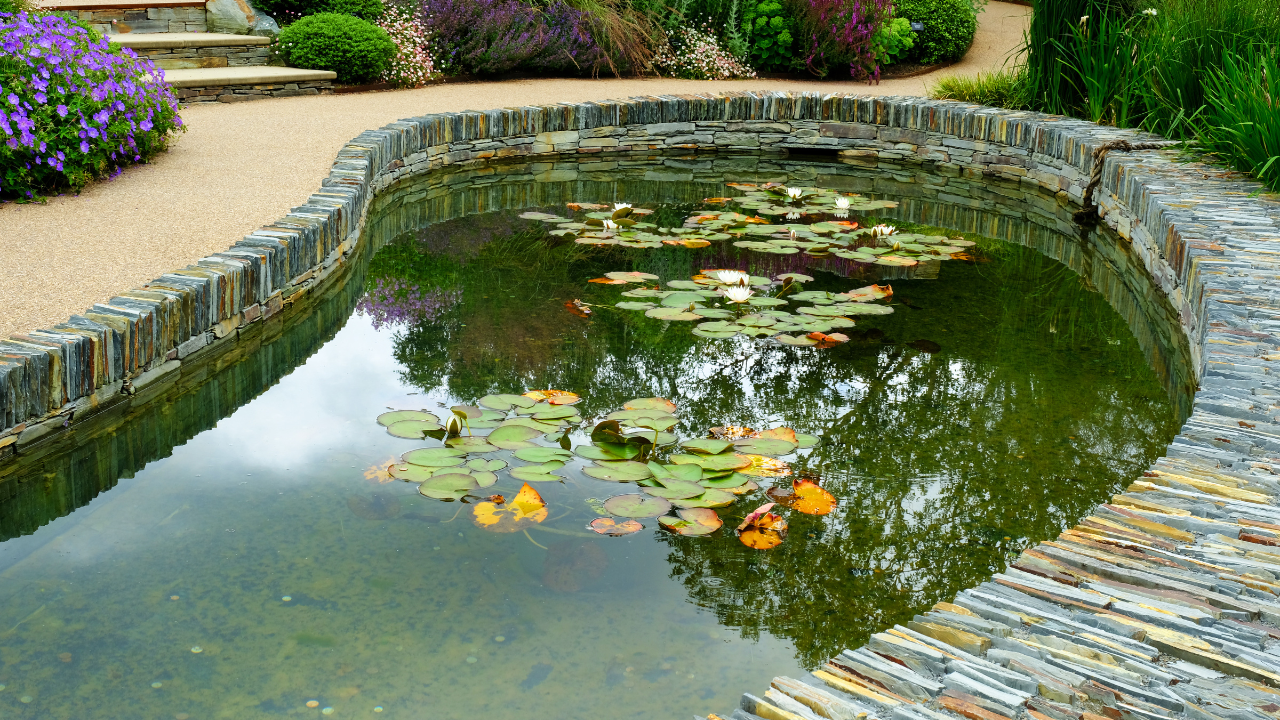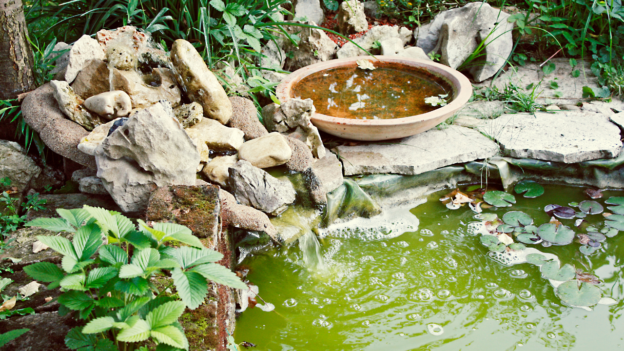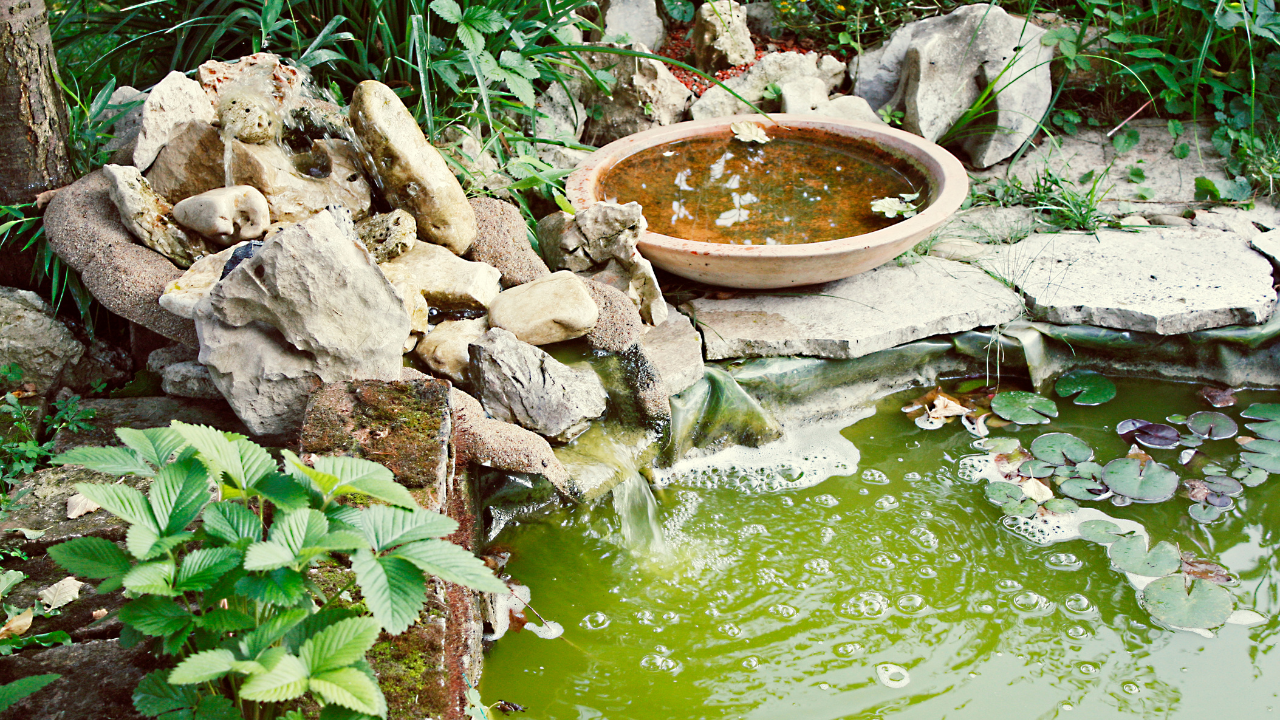Key Takeaways
- Monthly pond maintenance in Orange County typically ranges from $150 to $500, depending on service level.
- Basic service includes cleaning, skimming, and water testing, while premium plans cover advanced treatments.
- Seasonal challenges like algae control and evaporation may increase service needs and costs.
- Preventive maintenance is more cost-effective than emergency pond and fountain repair in Orange County.
- Professional pond care protects both aesthetics and the long-term health of koi and aquatic plants.
A pond is more than just a decoration—it’s a living system. From koi fish to water lilies, every part of the ecosystem depends on balance. When water quality is neglected, ponds can quickly develop algae blooms, cloudy water, or equipment failures.
The following are key points to Monthly Pond Maintenance Costs in Orange County: What to Expect:
- Average Monthly Costs in Orange County
- Services Typically Included in Monthly Maintenance
- Seasonal Considerations in Orange County
- Why Professional Pond Care Is Worth the Cost
Monthly maintenance not only protects the appearance of water features but also extends the life of pumps, filters, and aquatic plants.
Average Monthly Costs in Orange County
So, how much does monthly pond maintenance typically cost in Orange County?
Based on local data and the Comprehensive Pond Report, the averages are:
- Basic Monthly Service: $150 – $250 per month
- Standard Monthly Service: $250 – $350 per month
- Premium Monthly Service: $350 – $500 per month
Basic plans cover essentials like pond cleaning, filter rinsing, and testing water levels. Standard and premium plans add services like water quality management, koi health checks, and seasonal equipment adjustments.
While exact costs depend on pond size, equipment, and aquatic life, these ranges help homeowners plan effectively.
What Impacts the Cost of Pond Maintenance?
Several factors drive monthly pricing:
- Pond Size and Depth: Larger koi ponds or outdoor fountains require more labor and treatment.
- Aquatic Life: Ponds with koi and pond fish demand more care than those with only plants.
- Equipment Quality: Outdated or undersized water pumps and filters increase service needs.
- Seasonal Demands: Summer algae control and winter readiness can temporarily raise costs.
- Age of the Pond: Older pond builds may need more frequent inspections and part replacements.
Services Typically Included in Monthly Maintenance
A good monthly plan often includes:
- Debris removal and pond cleaning
- Surface skimming and algae control treatments
- Filter rinsing and water pump inspections
- Testing pH, oxygen, and ammonia levels
- Trimming aquatic plants like water lilies
- Seasonal adjustments to support koi health
- Fountain maintenance for connected water features
Premium services may add UV sterilizer checks, advanced water treatments, and long-term equipment monitoring.
Preventive Maintenance vs. Emergency Repairs
Planned maintenance is always more cost-effective than emergency services.
- Proactive Care: Monthly visits help prevent costly issues like pump failures or liner leaks.
- Reactive Repairs: Ignoring problems often leads to urgent pond and fountain repair in Orange County needs which costs two or three times more.
Regular service protects water features from expensive surprises and keeps koi ponds thriving.
Equipment and Supplies That Affect Costs
Quality parts reduce service frequency and lower overall costs. Pumps, filters, and aerators all influence the health of ponds. Replacing low-quality systems often pays off by improving efficiency.
When equipment needs replacing, many homeowners rely on pond fountain parts and supplies in Orange County. Choosing durable pumps, filters, and UV systems ensures cleaner water and longer-lasting results.
Seasonal Considerations in Orange County
Orange County’s climate creates unique seasonal needs:
- Spring: Deep pond cleaning and water quality checks after winter.
- Summer: More frequent visits due to algae blooms, koi stress, and dropping water levels.
- Fall: Removing fallen leaves, trimming plants, and preparing ponds for cooler months.
- Winter: Lower activity but continued inspections of equipment, especially heaters and pumps.
Adjusting care seasonally ensures pond health without unnecessary expense.
How Much Does Monthly Pond Maintenance Typically Cost in Orange County?
The typical range is $150–$500 per month, depending on service level. Homeowners with koi ponds or large water features often opt for premium plans since these provide more consistent monitoring.
For those who enjoy water gardens with koi or outdoor fountains, professional plans deliver peace of mind and predictable monthly costs.
Tips for Managing Monthly Costs
- Schedule regular water changes to keep chemistry balanced.
- Invest in energy-efficient water pumps and filtration systems.
- Use shade from aquatic plants like water lilies to reduce algae growth.
- Bundle pond services with lawn care or landscaping for added efficiency.
- Sign up for contracts to lock in stable monthly pricing.
Why Professional Pond Care Is Worth the Cost
While DIY care might cover basic cleaning, professional pond care ensures critical details aren’t missed. From koi health checks to precise water chemistry adjustments, expert service helps ponds remain stable year-round.
Technicians also spot problems early, whether it’s declining water quality, failing pumps, or plant overgrowth. Their experience keeps water features beautiful and functional while protecting valuable fish and plants.
Making the Smart Investment in Pond Maintenance
Owning a pond should be about enjoyment, not stress. By planning for monthly costs, you protect your koi, plants, and outdoor fountains while avoiding expensive emergencies. Professional services not only save money long-term but also give you a consistently beautiful pond to enjoy.
At Orange County Pond Services, we’ve been maintaining ponds since 2001. From koi pond care and fountain maintenance to water treatments and emergency repairs, our certified team delivers expert support. Whether you need reliable maintenance or replacement parts, we’re here to help your pond thrive season after season.
